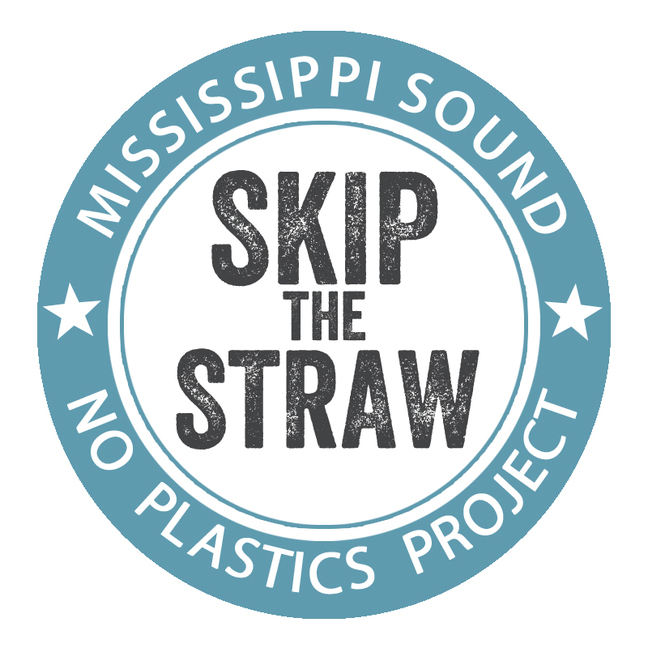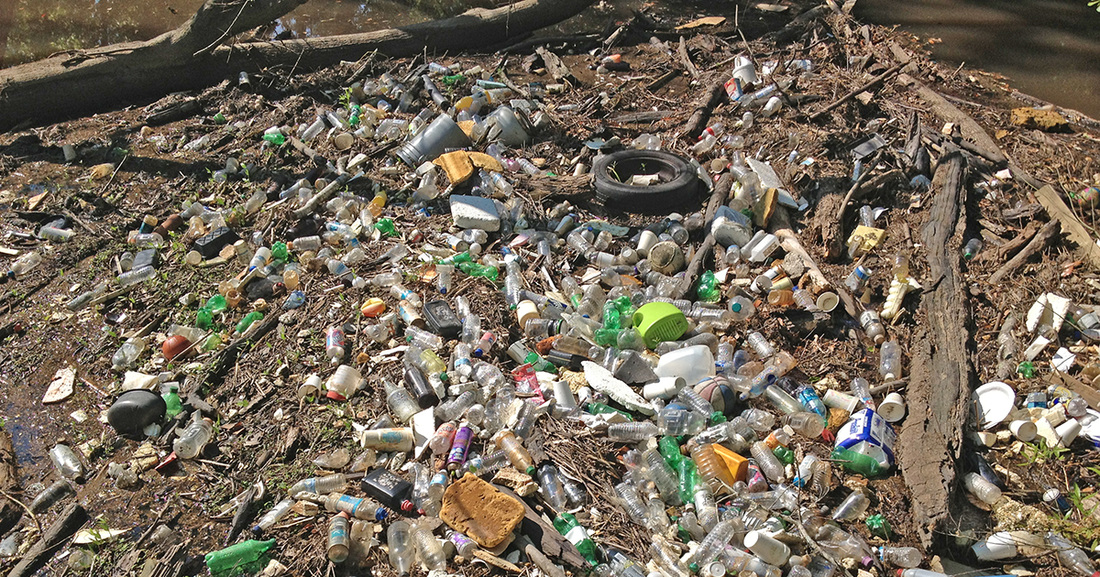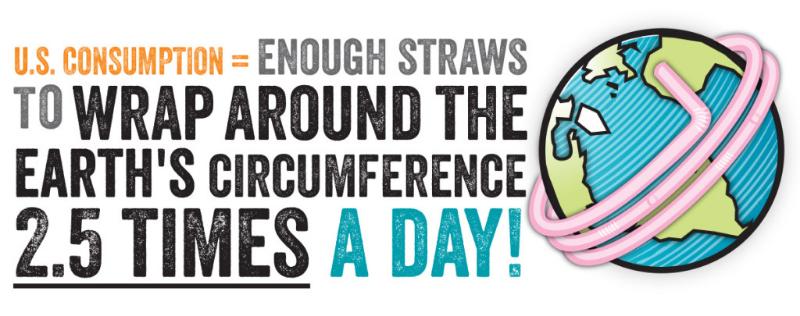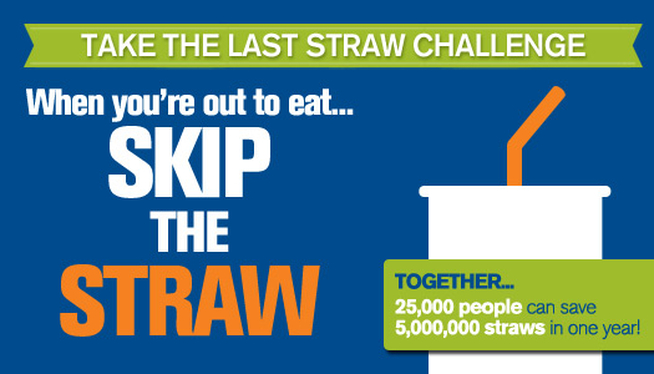The Last Straw
How a group of BSL residents are teaming up to just "say no" to drinking straws. Why does it matter? You might be surprised!
- story by Ellis Anderson
Larry is one of those people who thinks mathematics are actually fun. I can’t begin to guess how he came up with something like this. I laughed very hard.
“No, I’m serious,” he said. “Why do we even need drinking straws? Use it a few minutes and it’s in a landfill forever. What a waste. I’m going to start refusing to take them.” I’d never even given a thought to drinking straws before. “Did you see something about straws on the Internet?” I asked. He hadn’t. The thought had just occurred to him, unbidden. But it turns out the idea was percolating all over town. A few weeks later, we were having lunch with Carole McKellar and her husband, John. They politely refused straws when their drinks arrived. Carole told me that she was part of an informal group that had recently come together. The friends hope to bring awareness about the long-term damage caused by “one use” plastics and they’re starting with the low-hanging fruit: drinking straws. “One use” means we use an item one time and then toss it in the trash. Drinking straws are one-use-wonders, because while Larry’s calculations are correct, he started with a lowball number. It turns out that Americans actually use 500 million straws a day. Enough to wrap our planet two and a half times. That’s just in this country.
Ann Weaver is part of the new Bay St. Louis plastics awareness group (they haven’t come up with an official name yet). She holds a master’s degree in Marine Ecology and works for NOAA, traveling around the country, training protected area managers. For years, she’s been researching and experiencing firsthand the tragic impacts of plastic garbage in our oceans.
She first became aware of the problem years ago, when she traveled to Vietnam and was shocked by the amount of waste that had accumulated on some of the smaller islands. Scuba-diving off the coast, she saw more plastic bags than fish. Later, Ann committed to living an entire year plastic-free. She found her goal impossible. Even many grocery store vegetables come wrapped in plastic. She lowered her standards and now tries to use every piece of plastic that comes into her house at least three times before throwing it away. For example, her dogs’ meals are often served on Styrofoam meat trays instead of in regular bowls (Ann says they don’t notice). ‘The problem with plastic is that it’s much less expensive to make new plastic than it is to recycle plastic. “Once it’s made, it’s really hard to unmake it,” says Ann. “And it never just dissolves, it just breaks down into smaller and smaller bits.” Those bits are eaten by fish and wildlife, working their way into our ecosystem. It’s estimated that over two-thirds of all fish in the ocean have plastic in their bodies.
Local artist Kerr Grabowski is also a member of the group and like Ann, sees straws as a great way to start changing the downhill dynamic without people giving up any quality of life.
The women want to get the word out about Ocean Conservancy’s Last Straw Challenge. Individuals sign a simple online statement committing to asking their server to “skip the straw” when they’re out to eat.
The group eventually hopes to convince local restaurants to offer straws by request only. Kerr believes that restaurant owners will jump on board readily since they’ll benefit in three ways: Cost savings, customer appreciation, and knowing it’s just the right thing to do.
The group is looking into other ways Bay-Waveland residents can work to save our fantastic coastal “backyard.” You can help by taking this simple online survey! “The No Straw challenge is an easy thing I can do,” says Ann. “I don’t even have to get on my preacher horse. I just tell the server ‘thank you, I don’t need a straw,’ and if someone asks me why, I tell them.” Click here to take the Recycling Survey NOW!
|
Categories
All
Archives
July 2024
|
Shoofly Magazine Partners
Our Shoofly Partners are local businesses and organizations who share our mission to enrich community life in Bay St. Louis, Waveland, Diamondhead and Pass Christian. These are limited in number to maximize visibility. Email us now to become a Shoofly Partner!































 RSS Feed
RSS Feed























